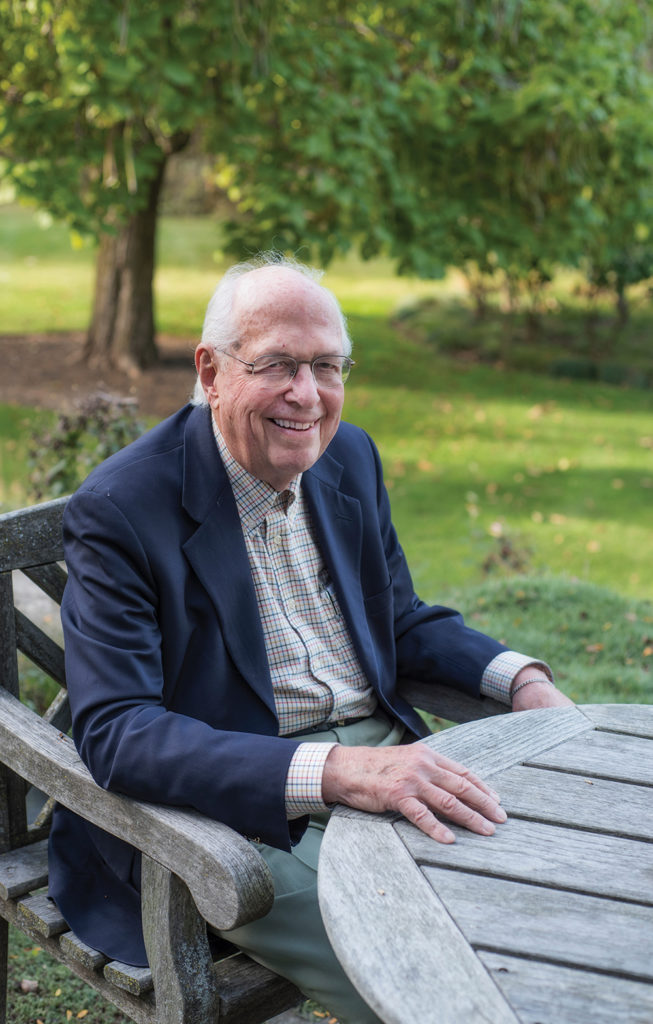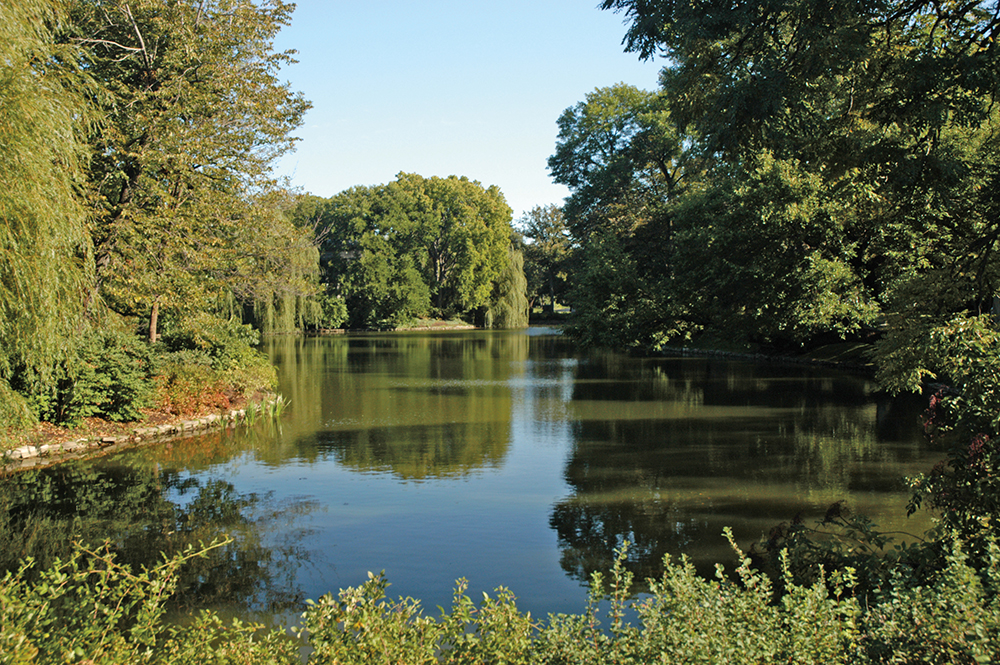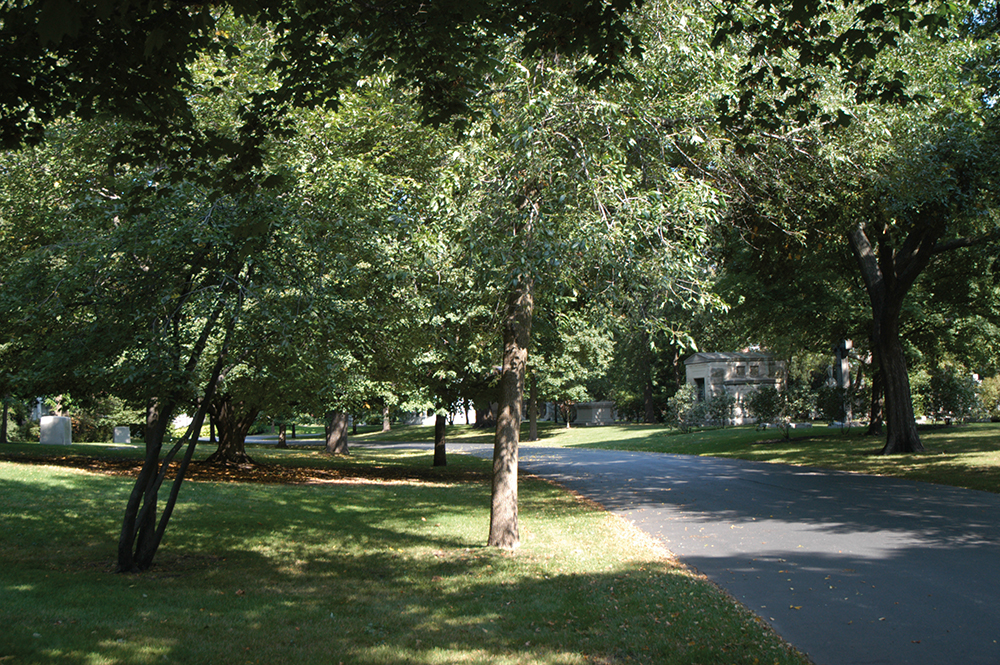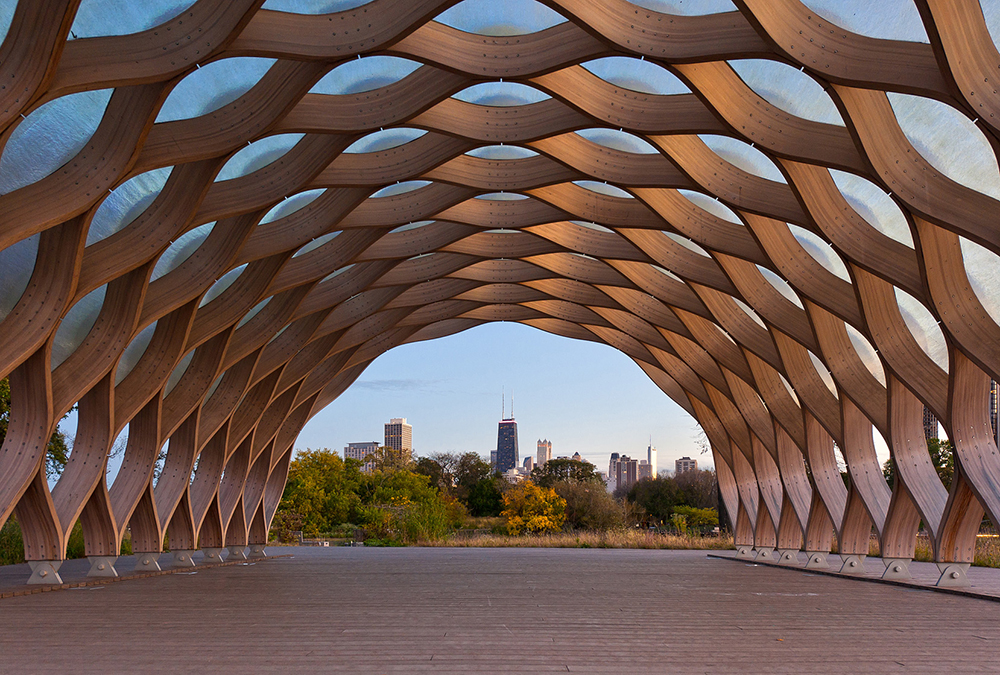John K. Notz Jr., Chicago, Illinois (2018)

John Notz describes his affinity for landscapes that have figured vividly in his lifetime as cathexis—a not-accidental choice of word by the now-retired Chicago-based lawyer. Having been intimately involved for decades with the preservation of important American landscapes as varied as urban cemeteries and lakeside gardens, he uses the term to describe his intense commitment to place. Notz, who lives with his wife, Janis, in a 1920s-era apartment on Chicago’s Lincoln Park, relates that it was while taking a continuing education class at the University of Chicago that he first encountered the term, which refers, in a psychoanalytical sense, to the investing of a person or place with strong “psychic energy.” It was only after reading memoirs written by his mother that Notz understood the import of the word.
In his mother’s reminiscences of her favorite grandfather’s summer home on Geneva Lake, he came upon a description that touched him. “The terrain formed a wooded valley, through which a lovely brook hurried to join the lake,” she wrote in a passage describing the landscape her grandfather had commissioned from Jens Jensen. Notz believes this was the great American landscape architect’s first private estate. Although the family’s Victorian mansion, known as “Forest Glen,” burned in the 1920s, Notz’ innate connection to the locale has fueled his commitment to documenting and conserving other Geneva Lake places. “You can still see archaeological pieces of rockwork by Jensen,” he says. “The land where Forest Glen once existed has ponds, which couldn’t be natural; also, there are visible remnants of Jensen’s stonework that controlled the water features.

In time Notz and his wife purchased a home close to Geneva Lake, which has been a tony weekend destination for Chicagoans since 1871. His knowledge of the namesake body of water and its surrounding topography leads him to offer friends tours of its natural and man-made features. In addition to unofficial tour guiding, Notz has served for a decade as a director of the Geneva Lake Conservancy. Apart from his many professional and civic affiliations, he has always made time for issues of landscape conservation and preservation. Those causes include his being a director of Inspired Partnerships, a spin-off from the National Trust which supported the preservation of religious structures; volunteer governance roles for the Society of Architectural Historians; facilitating the creation of the Black Point Preserve to steward Black Point Estate & Gardens; ongoing “actual feet-on-the-ground” work for Chicago’s Graceland Cemetery; and two terms as a director of the Library of American Landscape History.
Notz, who is keenly aware of the nuances of language, makes a distinction between “preservation” and “conservation.” He defines the former as “the active pursuit of true restoration” and the latter as “the passive acceptance of natural change,” which, for him, implies adaptation to change. “A really good landscape design will, of course, change, but it will maintain itself as a work of art. You can witness that having happened in the works of Jens Jensen, O. C. Simonds, and Frederick Law Olmsted Sr.”

One of Notz’ favorite conservation projects is Chicago’s Graceland Cemetery, the 119-acre property on the city’s North Side, whose origins date to 1860. Its original landscape architects include H. W. S. Cleveland, William Le Baron Jenney, and Ossian Cole Simonds, a founder of the American Society of Landscape Architects. Notz is working to facilitate the creation of an interest group that might become a William Le Baron Jenney Society and lead to recognition of the architect’s astonishingly diverse landscape architecture. “I came to realize that Simonds claimed and accepted far more credit for the design of the landscape of Graceland Cemetery than he was entitled to,” Notz asserts. “Jenney, Simonds’s early mentor, had been accorded far less.” Independently, following the research lines taken by the historian Christopher Vernon, Notz combed through the minutes of cemetery meetings and other contemporary records, especially those from the late 1870s. Notz and Vernon agreed that “Jenney not only designed the landscape of the eastern half of Graceland, but he obtained and saw to the planting of a great many of its larger trees. I have taken to saying that Simonds, in supplying the ‘softscape’ of the northeast quadrant of the cemetery, provided the ‘frosting’ for a large cake—the lakes, roads, and first tranche of trees—that had been baked by Jenney.” Notz’ research on this important rural cemetery played a key role in LALH’s publication of Graceland Cemetery: A Design History by Christopher Vernon, in 2011.
While Notz spends more time in his Chicago home than in Lake Geneva, he is never far from landscapes that inspire him. From his apartment window, he looks down to Lincoln Park, Lake Michigan’s great planted foreground, and its Alfred Caldwell Lily Pool is nearby. So coveted is the Prairie-style water feature of 1936 that, since its skillful restoration by the Chicago landscape architect Ted Wolff, it has had its own support group, separate from the larger Lincoln Park Conservancy. “Much as I admire the surroundings of that pool, though, I am struck by the pavilion that Jeanne Gang, the Chicago architect, designed for the park’s South Pond,” Notz says, referring to a mostly open-air wood-and-fiberglass structure that ties together the elements of the water garden. “She really hit it just right with that structure.”

As a dedicated flâneur of the city (although he admits to not being able to go as far these days), Notz walks through many other places, too, including Grant Park, which fronts downtown. There the tourist mecca of Millennium Park has transformed what had been mostly a featureless expanse of lawn. “It is not the kind of park I would have created,” he comments, “but it accommodates large numbers well. In that sense, it is a complete success.” Throughout all his research and advocacy, Notz is seeking to change a way of thinking: “Having been so involved with landscapes, I know what a stepchild landscape design is in the realm of architectural history. Thank God that we have entities like LALH, which continue to bring awareness to the public of how integral that discipline is to architecture. By publishing books, making films, and hosting exhibitions, LALH gives landscape design a voice that endures.”
—David Masello is executive director of Milieu magazine. Based in New York, he writes about art, culture, and design for many publications.